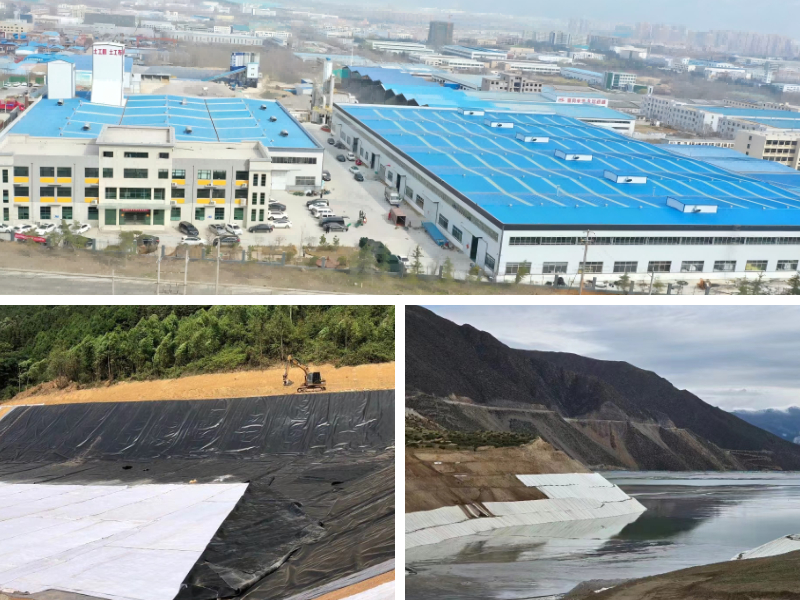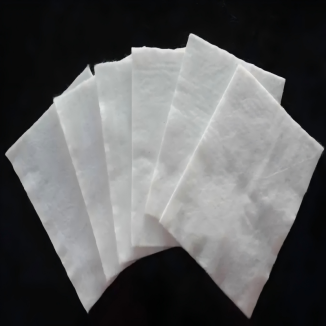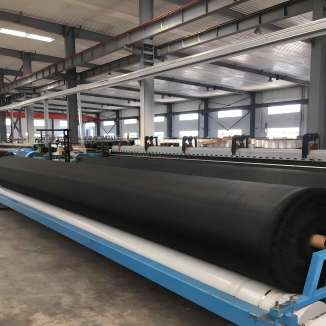What is Geofabric Cloth? A Beginner's Guide to Uses and Benefits
If you have ever been concerned in a landscaping, construction, or civil engineering project, you've got probable heard the time period geofabric cloth. But what precisely is this material, and why is it viewed so crucial with the aid of professionals? This beginner's information will damage down the whole thing you want to understand about geofabric cloth, from its simple definition to its magnificent vary of advantages and realistic applications. Understanding the kinds of geofabric and their unique makes use of can be the key to a longer-lasting, greater stable, and profitable project.
What is Geofabric? A Simple DefinitionLet's begin with the imperative geotextile cloth definition.
Geofabric, extra formally recognized as geotextile, is a permeable artificial cloth material. It is commonly made from polypropylene or polyester and is designed to have interaction with soil and rock to operate precise engineering functions. Think of it as a high-tech, particularly long lasting blanket for the ground. But alternatively of offering warmth, its major jobs are to separate, filter, reinforce, drain, and protect. Unlike substances like plastic sheeting, geofabric is permeable, permitting water to omit thru it whilst stabilizing the soil and stopping erosion. This easy but effective fabric is a cornerstone of modern-day building and landscaping.
The Two Main Types of Geofabric: Woven vs. Non-WovenNot all geotextiles are created equal.
The two fundamental kinds of geofabric are labeled via their manufacturing process: woven and non-woven. Each kind has wonderful residences that make it appropriate for extraordinary applications.
1. Woven GeofabricWoven geotextiles are manufactured with the aid of weaving collectively man or woman threads or tapes in two directions, plenty like a regular textile. This technique creates a cloth with excessive tensile strength, which means it is notably resistant to stretching and tearing below tension. Key Characteristics: High strength, low elongation, and extraordinary load distribution. Best For: Reinforcement and stabilization applications. You'll generally locate woven geofabric fabric used beneath heavy hundreds like roadways, parking lots, and gravel driveways the place soil separation and stabilization are the foremost goals.
2. Non-Woven GeofabricNon-woven geotextiles are made by way of bonding collectively artificial fibers both automatically (needle-punching), thermally, or chemically. Best For: Drainage, filtration, and safety projects. Common geofabric fabric makes use of for the non-woven kind consist of French drain systems, erosion manage on slopes, and as a defensive layer below landscaping mulch. Choosing the proper kind of geofabric is integral for your project's success. Using a woven cloth for a drainage venture would be ineffective, simply as the usage of a non-woven cloth for heavy load reinforcement would in all likelihood lead to failure.
Key Functions: How Does Geofabric Cloth Work?
The versatility of geofabric comes from its potential to function numerous quintessential functions, frequently simultaneously. Here’s how it works its magic:
Separation:This is one of the most frequent geofabric fabric uses. When two distinct soil types, or soil and mixture (like gravel), combine together, it can lead to instability and weakness. Geofabric acts as a everlasting barrier between these layers, stopping them from mixing. For example, it maintains gravel from sinking into the smooth subsoil of a driveway, keeping the integrity and toughness of the surface.
Filtration:In its filtration role, geofabric approves water to float thru it whilst stopping soil particles from washing away. This is imperative in drainage applications. It stops nice silt and clay from clogging up drainage structures whilst letting water ignore freely, making sure the machine continues to characteristic for years.
Drainage:Non-woven geofabric is especially designed to accumulate and transport water or gases inside its plane. Its multi-directional permeability makes it perfect for use in drainage trenches, in the back of conserving walls, and on slopes to control water glide and decrease hydrostatic pressure.
Reinforcement:By including tensile electricity to the soil, geofabric material can appreciably enhance the steadiness and load-bearing ability of susceptible ground. It distributes hundreds over a wider area, which is why it is critical in constructing roads on tender soil or stabilizing steep embankments.
Protection:Geofabric acts as a cushion, defending subtle waterproofing membranes (like these used in ponds or landfills) from puncture via sharp rocks or particles in the soil.
Top Geofabric Cloth Uses in Real-World Projects.
Now that we recognize its functions, let's seem to be at some realistic geofabric material makes use of that you would possibly come across in DIY or expert projects:
Driveways and Roads: Placed between the subsoil and the gravel base, it prevents rutting and potholes by using stabilizing the foundation.
Landscaping and Garden Beds: Used as a weed barrier beneath mulch or ornamental stone, it suppresses weeds whilst nevertheless permitting air and water to attain plant roots (unlike plastic sheeting).
French Drains and Drainage Systems: Wrapped round perforated drain pipes and gravel, it filters out soil and prevents clogs.
Retaining Walls: Installed at the back of the wall, it enables drainage and reduces water stress that should motive the wall to fail.
Erosion Control: On slopes and shorelines, it holds soil in vicinity till vegetation can set up its root system.
Underneath Patios and Walkways: It offers a stable, separated base for pavers or stepping stones, stopping settling and shifting.
The Multitude of Geofabric Benefits.Why go thru the more step of putting in geofabric?
The advantages are substantial:Cost-Effective: It dramatically reduces long-term protection prices through extending the existence of your project. Less gravel is wished for driveway top-ups, and drainage structures may not want to be dug up and cleaned as often.
Increases Longevity: By stopping mixing, erosion, and instability, tasks closing tons longer except failing.
Improves Performance: It enhances the strength, drainage, and steadiness of the soil, making the whole shape greater reliable.
Versatility: The distinctive sorts of geofabric imply there is a ideal answer for nearly any ground-related challenge.
Environmentally Friendly: Many geotextiles are made from recycled materials, and their use reduces the want for virgin aggregate. They additionally assist stop soil erosion and defend water quality.
Getting Started with Your Project: Understanding what is geofabric and its core ideas is the first step. For any project, usually begin via defining your fundamental goal: Do you want separation, drainage, or reinforcement? This will guide you to the proper kind of geofabric—woven for strength, non-woven for drainage and filtration. Proper set up is additionally key; make certain the cloth is laid easily with ample overlaps to be effective. By incorporating this engineered cloth into your plans, you are constructing a smarter, stronger, and greater long lasting basis for success.
Contact Us
Company Name: Shandong Chuangwei New Materials Co., LTD
Contact Person :Jaden Sylvan
Contact Number :+86 19305485668
WhatsApp:+86 19305485668
Enterprise Email: cggeosynthetics@gmail.com
Enterprise Address: Entrepreneurship Park, Dayue District, Tai 'an City,
Shandong Province








